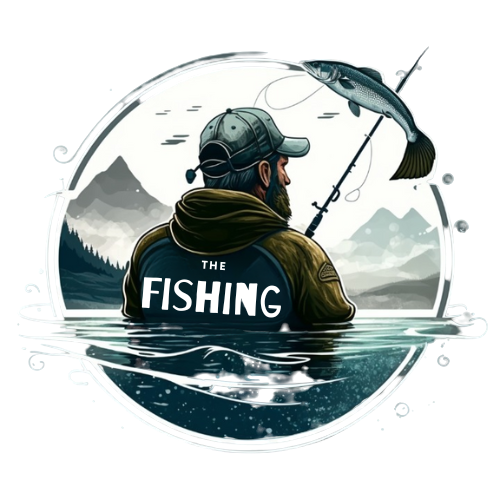Imagine you’re standing waist-deep in a rushing river, the sun is just beginning to peek over the horizon, casting a golden glow on the water. In your hands, you hold a line carries a fly rod, and with a graceful flick of your wrist, you send the line arching through the air, the fly landing gently on the water’s surface.
Yes! I’m talking about fly fishing.
You might be wondering, “What is fly fishing?” Well, that’s exactly what I’m here to talk about.
I’ll be diving deep into the world of fly fishing, exploring its history, the differences between fly fishing and spin, fish fly fishing itself, and why I believe it’s the best form of fishing out there.
I’ll also delve into the pros and cons of fly fishing, the various types including dry, wet, and saltwater fly fishing, and the unique aspects of each.
If you’re a beginner, don’t worry, I’ll also cover how to start fly fishing and answer some frequently asked questions.
So, whether you’re a seasoned angler looking to try something new, or a complete beginner to the world of fishing, this blog post is for you.
Let’s dive in, shall we?
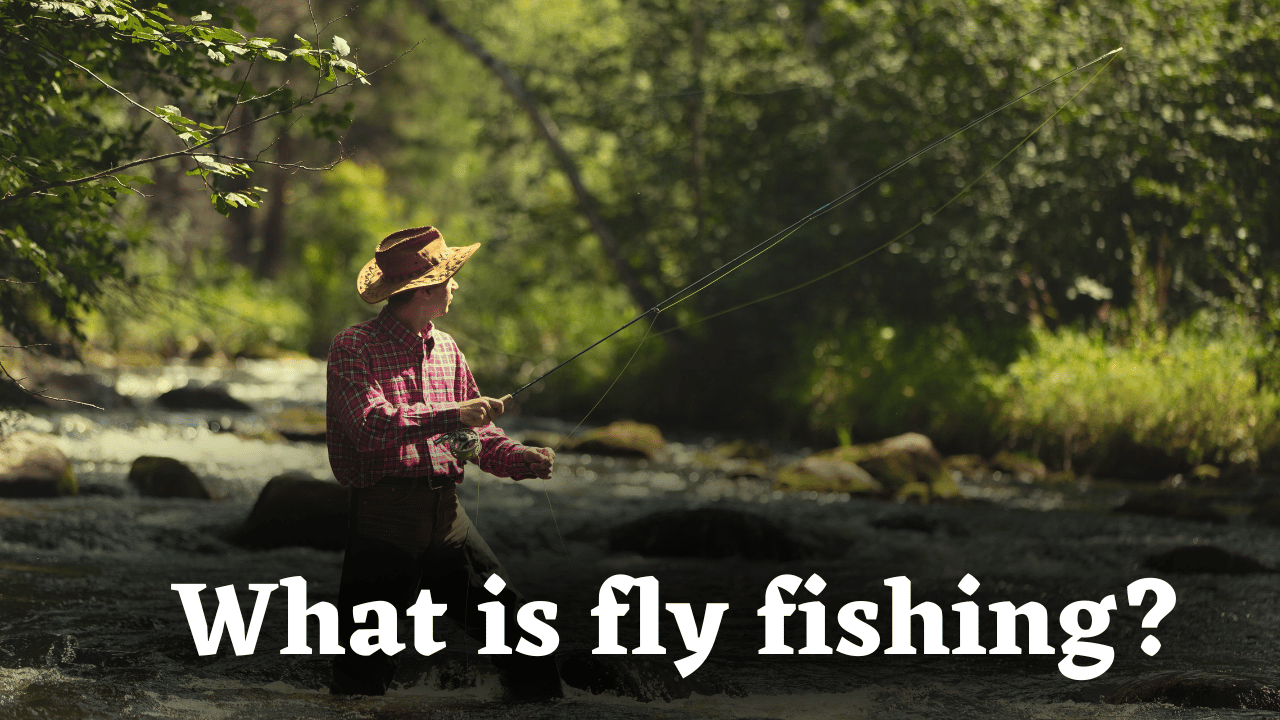
Table of Contents
- What is Fly Fishing?
- A brief history and origin of fly fishing
- Difference between fly fishing and spin Fishing
- Why fly fishing is the best?
- Pros and cons of fly fishing
- Types of Fly Fishing
- The Gear Used in Fly Fishing: Fly rod, Fly line & more
- Different Types of Flies
- Fly Fishing Casting Techniques
- The Species Targeted in Fly Fishing
- How to Start Fly Fishing?
- FAQs
- Conclusion
What is Fly Fishing?
Fly fishing is a method of angling where an artificial ‘fly’ is used to catch fish. The fly is cast using a fly rod, reel, and specialized weighted line. It’s popular in freshwater and saltwater fishing.
Fly fishing is a unique and exciting way to catch fish that has been practiced for centuries. The sport relies on a lightweight fly rod, a specialized fly fishing line, and an assortment of attractive flies designed to mimic the natural food sources of the fish being targeted.
Fly fishing differs from traditional spin fishing in its use of light lines and casting techniques designed to land the fly gently on top of the water’s surface.
Read also: Why Do Fly Fishermen Stand In The Water? and Does Fly Fishing Catch More Fish? Yes! but how?
A brief history and origin of fly fishing
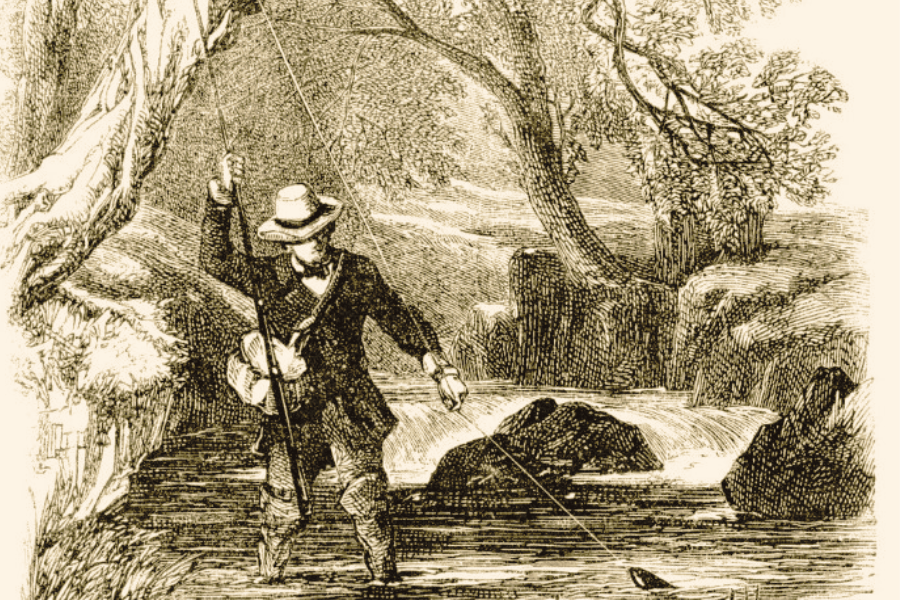
Fly fishing has a rich history that dates back to ancient times. It is believed that fly fishing was first practiced in Macedonia and the River Astraeus around 200 AD.
However, the first recorded evidence of fly fishing comes from the 15th century in England, where it was primarily used for catching trout and grayling. In the early days of fly fishing, anglers would use natural materials such as feathers, horsehair, and silk to create flies that imitated various insects.
These flies were much larger than modern-day flies and were used primarily for wet fly fishing. The first written record of artificial flies comes from Dame Juliana Berners’ “A Treatyse on Fysshynge wyth an Angle” in 1496.
As time passed, fly fishing evolved into a more sophisticated art form with the development of new casting techniques and lighter weight gear. The introduction of dry fly fishing in the mid-19th century revolutionized the sport by allowing anglers to catch fish on the surface with imitative flies.
Today, fly fishing has become a popular pastime for anglers all over the world who seek to challenge themselves with more technical casting techniques and catch larger trout or warm water species like smallmouth bass or striped bass using light weight equipment designed specifically for this sport.
With advances in technology including new materials for rods, reels and lines have made it easier than ever before to get started with this ancient art form while still keeping its essence intact.
Ref. –
- https://flyfishcircle.com/library/the-history-of-fly-fishing
- https://www.flydreamers.com/en/history-of-fly-fishing
- https://stillwateranglers.com/fly-fishing-history-everything-you-need-to-know/
- https://captainexperiences.com/blog/the-history-of-fly-fishing
- https://www.paintedtrout.com/blogs/blog/the-secret-history/
Difference between fly fishing and spin Fishing
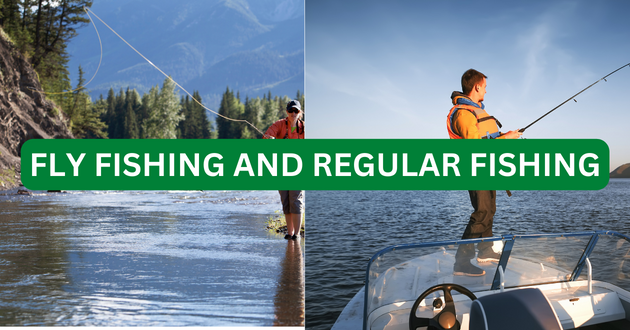
Here is the main difference between fly fishing and spin Fishing:
| Fly Fishing | Spin Fishing |
|---|---|
| Uses lightweight, artificial flies as lures | Uses heavier lures, such as spoons, jigs, and spinners |
| Requires a specialized fly rod and reel | Utilizes a spinning rod and reel |
| Focuses on casting technique to present the fly | Depends on the weight of the lure for casting distance |
| Often targets specific fish species like trout and salmon | Can target a wider variety of fish species |
| Typically more challenging and requires a higher level of skill | Easier for beginners to learn and master |
Read also: What’s The Difference Between Fly Fishing And Regular Fishing? and Is fly fishing harder than regular fishing [Spin Fishing]?
Why fly fishing is the best?
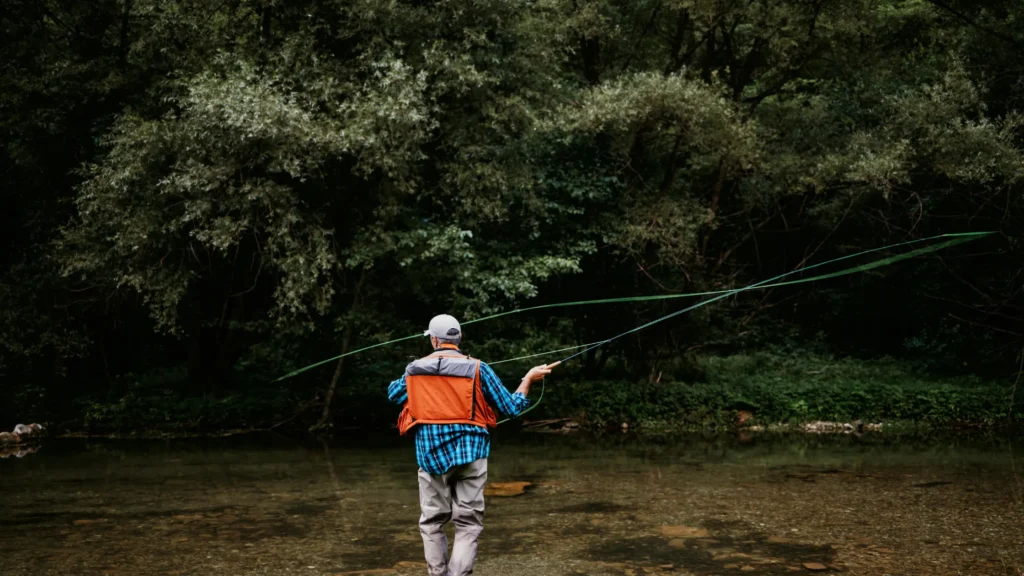
Fly fishing is definitely the best method out there.
It’s not just my opinion, but that of countless other fly fisherman who have fallen in love with this amazing sport. There are many reasons why the fly fishing experience stands out among all other forms of fishing.
One of the main reasons why fly fishing is considered the best is that it requires a lot of skill and finesse. Unlike other forms of fishing where you can simply cast your line and wait for a fish to bite, fly fishing requires you to use specific casting techniques and attractive flies that imitate natural prey.
This means you have to be proficient in casting techniques such as false casting and spey casting, and know what types of flies to use for specific species. It might take some time to learn the skills necessary, but once you get the hang of it, fly fishing becomes an incredibly rewarding experience.
Fly fishing allows for catch-and-release practices without harming the fish. Because imitative flies are used instead of bait that needs to be swallowed by the fish, hooking them becomes less dangerous.
A lot of us want to preserve our waters by taking care not only our own catches but also protecting the fishes in their natural habitat. Fly fishermen have access to some incredible places that traditional fishermen don’t even know exist.
Read more: Why is fly fishing so addictive? and Is Fly Fishing All in the Wrist?
Pros and cons of fly fishing
As with any form of fishing, fly fishing has its pros and cons. Let’s take a look at both.
| Pros | Cons |
|---|---|
| Allows for a more natural presentation of bait to fish | Requires more skill and practice to master |
| Can target a wide variety of fish species | Equipment can be more expensive than other fishing methods |
| Offers a more immersive, hands-on experience | Not as effective in certain fishing conditions (e.g., strong winds) |
| Environmentally friendly, as it uses minimal gear and artificial flies | Can be physically demanding, especially when casting for long periods |
Types of Fly Fishing
There are different types of fly tying techniques and methods used to catch various fish species. The three most popular types of fly fishing include dry fly fishing, wet fly fishing, and saltwater fly fishing.
Dry Fly Fishing:
Dry fly fishing is probably the most popular type of fly fishing.
It involves casting a dry artificial fly on top of the water surface where the fish are feeding. This technique is best suited for catching trout in freshwater streams and rivers.
It requires a delicate presentation since any unnatural movement can quickly spook the fish.
Wet Fly Fishing:
Wet fly fishing involves casting a weighted or unweighted artificial fly beneath the water surface where the fish feed.
This two-part system makes it easier to cast further since you don’t need to worry about getting your flies on top of the water surface. Wet flies imitate drowned insects or baitfish, making them more attractive to larger fish species such as brown trout or rainbow trout.
Saltwater Fly Fishing:
Saltwater fly fishing usually takes place along coastal areas, targeting species such as striped bass and bonefish. In saltwater environments, you need a heavy-duty rod that can handle large fish, strong tides, and heavy winds.
The primary difference between saltwater and freshwater flies is their size – saltwater flies are typically larger since they mimic bigger baitfish or crustaceans. Each type of fly-fishing technique has its unique aspects that make them effective at catching different types of fish species in various aquatic habitats.
The Gear Used in Fly Fishing: Fly rod, Fly line & more
In order to do fly fishing you need fly rod, fly reel, fly line, leader and tippet, flies, and other accessories like wading boots, and fishing vests. Each piece of equipment serves a specific purpose in the sport.
Fly fishing requires a few essential pieces. First of all, you can’t fly fish without a fly rod. There are many different types of fly rods out there, from the length and weight of the rod to the type of material it’s made from.
You’ll want to select a rod that is appropriate for the type of fishing you’ll be doing – for example, if you’re going after bigger fish like brown trout or smallmouth bass in rivers and streams, you’ll likely want a heavier weight rod that can handle larger flies and heavier line.
Next up is the fly reel – this is what holds your fly line and allows you to retrieve it when catching fish.
Different types of reels are better suited for different types of fishing – for example, saltwater species require more heavy-duty reels that can withstand tough conditions and large fish. Fly lines are also an important element in your gear setup.
They come in many different weights and tapers which determine their performance on the water’s surface.
A lighter weight line is best suited for smaller flies while a heavier line might be necessary when casting heavy streamers or nymphs deep into the water column.
Don’t forget about other essential gear items such as waders (if you’re planning on getting in the water), wading boots (for traction), and a good pair of polarized sunglasses (to help reduce glare on the water). And let’s not forget about fly boxes!
Fly anglers love collecting attractive flies to add to their collection. A local fly shop will have plenty of varieties available – choose some that look like food sources common in your favorite watersheds!
Read more: Can you fly Fish with a spinning rod? and Difference between Fly Fishing and Regular Fishing Rods
Different Types of Flies
The type of fly you use can make all the difference. There are many different types of flies that are used in fly fishing, each designed to mimic a certain insect or baitfish.
Some of the most use type of flies is dry flies (adult insects), wet flies (aquatic insects/larvae), nymphs (immature insects), streamers (baitfish), terrestrials (land insects), and poppers/sliders (surface flies).
The three main types of flies used in fly fishing are dry flies, wet flies, and streamers. Dry flies are designed to float on the top of the water and imitate insects that are found on the surface of the water.
These types of flies are ideal for catching trout that feed on insects like mayflies and stoneflies. One popular dry fly is the Royal Wulff, which is a brightly colored attractor pattern that can entice even the most finicky trout to take a bite.
Wet flies, on the other hand, sink below the surface of the water and imitate insects or baitfish that swim just below the surface. These types of flies are great for catching fish like smallmouth bass or brook trout that feed near the bottom.
One popular wet fly is Woolly Bugger, which imitates a variety of baitfish and can be fished in both stillwater and moving water. Streamers are large artificial lures that mimic baitfish or other large food sources like leeches or crayfish.
Unlike dry or wet flies, streamers require a larger rod’s length and heavier line to cast effectively. Streamer patterns like Clouser Minnows or Woolly Buggers can be very effective when targeting large predatory fish like pike or striped bass in saltwater fly fishing.
Fly Fishing Casting Techniques
In fly fishing, a big part of the appeal is in casting. There are many techniques to cast in fly fishing. Some of them very popular, such as –
Spey casting:
One of the most popular casting techniques in fly fishing is spey casting.
This technique originated on Scotland’s River Spey and is perfect for situations where traditional casts are difficult or impossible due to obstacles like trees or rocks. Rather than using a simple back-and-forth motion, spey casting involves creating deep arcs with the weight of the line and rod tip, allowing you to cast further distances with heavier lines.
Large roll cast:
Another useful technique is the large roll cast. This comes in handy when you need to make a long cast without much room for a backcast.
It’s also great for catching fish that are just out of reach of your typical casting distance. The key here is to use a somewhat heavier line than usual so that it can create enough momentum for the roll cast.
False casting:
False casting may not sound like much, but it’s an essential part of any fly fisherman’s arsenal. This technique involves making repeated back-and-forth motions with your rod and line while keeping the fly above the water’s surface before releasing it to pull line back into the water for a final cast.
While false casting might seem like wasted effort, it allows you to adjust your aim and distance before actually committing to a full cast. Plus, if done correctly, false casts can create tension on your line which will keep lighter flies floating on top of the water.
There are also some other cast techniques like Overhead Cast, Side Cast, Double Haul Cast, Belgian Cast, Tuck Cast, Reach Cast, Pile Cast, Steeple Cast that used in fly fishing.
The Species Targeted in Fly Fishing

One of the great things about fly fishing is the variety of species you can target. Depending on where you live or travel to, you can experience so many different types of fish that are just waiting to be caught.
From freshwater trout in a mountain stream to a saltwater fish and gamefish in the ocean, there are endless opportunities for fly fishing enthusiasts.
One of the most popular fish to target in fly fishing is the rainbow trout. These beautifully colored fish are found in streams and rivers all over North America and are known for their strength and beauty.
They can be caught using a variety of fly fishing techniques, including dry fly fishing and wet fly fishing. When targeting rainbow trout, it’s important to match the natural insect hatches that occur on the surface of the water with your artificial flies.
Fly fishing isn’t just limited to freshwater species, though. Saltwater species like striped bass can also be targeted with a fly rod.
Fly anglers often use larger flies when targeting saltwater gamefish due to their size and strength. When casting for these species, it’s important to have good casting technique and control over your fly line due to larger flies requiring more weight from your line.
Another popular freshwater species among fly anglers is brook trout. These beautiful fish are found in cold-water streams and lakes throughout North America and are known for their striking colors.
Brook trout can be caught using a variety of techniques such as dry flies or nymphs imitating natural prey items bait fish such as mayflies or caddisflies. Whether you prefer targeting freshwater or saltwater species, there is no shortage of opportunities when it comes to what is possible with fly fishing.
Read also: Is fly fishing only for trout?
How to Start Fly Fishing?
If you are begginer in fly fishing, you should watch this:
So, you want to start fly fishing? That’s great! Fly fishing is a fantastic hobby that can provide endless hours of enjoyment and relaxation.
However, as with any new activity, start fishing, there are some things you should know before jumping in. Here are some tips on how to start fly fishing.
First things first, you’ll need to get the right gear. This includes a fly rod, reel, line, and of course, flies.
You can choose from a variety of options depending on your budget and the type of fish you plan to target. Some fish species require lighter lines and more attractive flies than others (like brook trout versus striped bass), so make sure to do your research before purchasing gear.
Local fly shops can be an excellent resource for finding the right equipment to fly cast with. Next up is casting techniques.
Learning how to cast a fly properly is essential for catching fish successfully while fly fishing. Unlike more traditional fishing of bait fishing or spin fishing with artificial lures, fly fishing requires different casting techniques, such as false casting or large roll cast which takes some time getting used to – but it’s well worth it for the satisfaction of catching fish!
Once you have your gear and understand basic casting techniques like false casting or large roll cast using a nice reel (which has many types suitable for every budget) , it’s time to hit the water! However, don’t just jump into any river expecting immediate success- certain bodies of water will have better opportunities for catching certain fish species than others!
Research ahead of time about which species frequent different bodies of water so that when opportunity strikes in all its glory,you know what kind of bait or line would be most appropriate for catching those fishes! : There may be a bit more involved in starting up with fly-fishing compared to spin-fishing or bait-casting at first glance but once you get past that initial learning curve and invest into quality gear that suits your goals – The sport can quickly become as enjoyable and rewarding as any other form of fishing out there!
Read more: What months are best for fly fishing?
FAQs
What is the point of fly fishing?
The point of fly fishing is not simply to catch a fish but to experience the thrill of the hunt. In other words, it’s not really about what you catch, but how you catch it.
There’s something deeply satisfying about catching a fish on an artificial fly that you’ve carefully chosen and cast with your own hands. Fly fishing can also be a way to connect with nature in a more profound way than spin fishing.
Why is fly fishing so difficult?
The biggest reason for this is that fly fishing requires a lot of skill and technique.
Unlike other types of fishing where you can simply cast out a baited hook and wait for a fish to bite, fly fishing involves casting an artificial fly or artificial lure out that weighs next to nothing, which requires a lot more finesse and precision. Another reason why fly fishing is so difficult is that it requires anglers to constantly adjust their technique based on the conditions they are facing.
Different water conditions, weather patterns, and targeted species all require different approaches if you want to be successful. For example, if you’re targeting brook trout in a small stream with imitative flies, your approach will be very different from when you’re targeting striped bass in the surf with larger flies.
What do you catch when you fly fish?
One popular species that anglers target while fly fishing is trout. Trout are known for their beautiful colors and feisty personalities, making them a favorite among many fishermen. Another common species that is targeted by fly fishermen is bonefish.
Overall, what you catch when you go fly fishing depends on many factors such as location and time of year. However, with the right gear (including your rod’s length), knowledge about different fly casting techniques like spey casting or large roll cast) , understanding how different types of flies work (including those in your fly boxes) ,and some patience and persistence (as with any form of angling), there’s no limit to what kind of fish you can catch while enjoying this thrilling activity!
Conclusion
In sum, fly fishing is more than just a hobby—it’s an adventure that combines skill, patience, and a love for nature. Each form—dry, wet, or saltwater—offers its own unique experience, while the variety of gear, flies, and casting techniques add to the excitement.
Though it may seem daunting at first, don’t be put off. Remember, every expert was once a beginner, and the journey from novice to seasoned angler is part of the joy. So, step outside, take your fly rod in hand, and embrace the challenge. You’ll be surprised at how quickly you’ll get hooked on the art of fly fishing, and how it will open up a new world of outdoor discovery.
More about fly fishing:
